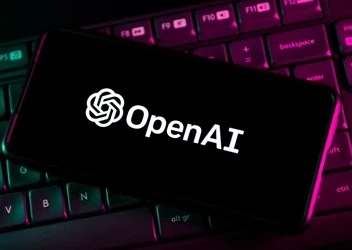What is AI governance?
AI governance defines the frameworks, policies and processes that guide the development, deployment and use of AI technology in a responsible, ethical and lawful manner
Add bookmark
Artificial intelligence (AI) governance defines the frameworks, policies and processes that guide the development, deployment and use of AI technology in a responsible, ethical and lawful manner.
It involves ensuring that AI systems are transparent, fair, safe, accountable and aligned with human values. Without strong governance, AI can cause harm such as discrimination, misinformation, job displacement or even physical danger.
Sound governance ensures that AI works for the benefit of society while minimizing its risks, and as businesses continue to invest in and adopt emerging AI tools such as generative AI and agentic AI, the need for robust governance grows.
Become a member of the AI, Data & Analytics Network for free and gain exclusive access to premium content including news, reports, videos, and webinars from industry experts. Connect with a global community of senior AI and data leaders through networking opportunities and receive invitations to free online events and weekly newsletters. Join today to enhance your knowledge and expand your professional network.
Join NowWhy is AI governance important?
“Governance isn’t optional, it’s your AI backbone,” says Lee Bogner, global chief generative AI and AI strategic enterprise architect at Mars. “Without it, you’re risking bias, compliance failures and technical drift.”
Governance should be a key aspect of any AI program, agrees Andreas Welsch, thought leader and author of the AI Leadership Handbook. “After all, you need to know what you’re building towards and why, and who’s involved. Putting governance in place ensures that roles and responsibilities are clearly defined and you can track the progress of your AI projects and their estimated versus realized value.”
What’s more, having a well-run governance process is also the foundation for compliance with rules and regulations. AI risks can be assessed and decisions can be taken whether or not to pursue an AI project to begin with, he adds.
What does AI governance look like?
AI governance should establish clear oversight that defines the chain of thought, reasoning and custody behind AI outputs, ensuring transparency and auditability, according to Doug Shannon, intelligent automation and AI thought leader. “It should also include alignment on the company’s purpose for using AI and a mechanism for employee feedback to keep the systems grounded in reality and continually improving.”
7 key aspects of AI governance
1. Ethical principles
These ensure that AI respects human rights, dignity, fairness and non-discrimination. They also help to promote transparency and explainability of AI systems.
2. Regulation and compliance
Adhering to national and international laws is integral to AI governance. These span things like the EU AI Act and U.S. AI Executive Order. Compliance goes a long way in limiting AI risks such as bias, surveillance and manipulation as well as legal liabilities.
3. Accountability
Businesses must assign responsibility for AI decisions and outcomes, supported and maintained by creating audit trails and mechanisms for redress.
4. Risk management
Robust AI governance means identifying and mitigating harms, such as those that threaten safety, privacy or democracy. Organizations should classify AI systems and use by risk levels (e.g. minimal, limited or high risk).
5. Transparency and explainability
This makes AI tools more understandable to users and stakeholders, illuminating when AI is used, especially in high-impact areas such as healthcare, hiring and law enforcement.
6. Data governance
Data is essential so successful AI adoption, but many organizations lack general data governance strategies, let alone those specifically focused on the integration of AI. This is a trend that must be addressed if businesses are to extract meaningful and consistent value from AI.
7. Human oversight
Despite many headlines about AI replacing human workers, people still have a major role to play in the age of AI. Humans are key to maintaining oversight of AI use, especially for critical decisions.
Register for All Access: AI in Business Transformation 2025!
Challenges of AI governance
AI is a fast-evolving concept with global impact. AI governance is therefore complex with several overlapping challenges, a number of which directly link to some of the key principles listed above.
Lack of transparency and explainability
The inner workings of many AI systems (especially deep learning models) are difficult to fully understand, even for those that create them. This can make it difficult to audit or hold systems accountable.
Global fragmentation
Different countries and regions are developing their own AI regulations and standards, often with conflicting priorities. While companies are responsible for complying with evolving frameworks, regulatory uncertainty makes it difficult to enforce shared ethical standards globally.
Innovation versus regulation
Over-regulation might stifle innovation, while under-regulation could lead to harm. Finding the right balance is challenging, particularly given how quickly technology advances faster than policy.
Surveillance and privacy risks
AI can be used for mass surveillance, profiling and invasive data collection. This raises ethical concerns about autonomy, consent and civil liberties.
Bias and discrimination
Many AI models can perpetuate or amplify existing societal biases in data. This can cause real-world harm, especially for marginalized groups.
Responsibility and accountability
Responsibility around AI can be murky. For example, who is responsible when AI causes harm? Is it the developers, companies, users or the AI itself? Legal and ethical accountability is still unclear in many cases.
Security and misuse
AI’s rich capabilities can be weaponized for nefarious and illegal purposes including deepfakes, autonomous weapons and cyberattacks. Governance must prevent malicious use without hindering beneficial innovation – not always an easy trade-off.
Lack of testing and auditing standards
There’s no universal standard for how to test or certify AI systems for safety, fairness or reliability. Inconsistent or weak evaluations make it tricky to compare or trust AI systems.
Insufficient public and stakeholder involvement
AI governance is often dominated by tech companies or governments, with limited input from civil society or the public. This can mean that AI policies may fail to reflect diverse perspectives and public values.
Capability and resource gaps
Many regulators lack the technical expertise or tools to evaluate and enforce AI laws effectively. This weakens oversight and creates opportunities for regulatory capture. Meanwhile, most organizations lack the workforce skills and knowledge to use AI tools to their full potential, stifling effectiveness.
Who is responsible for AI governance?
Ultimately, there is no single party responsible for AI governance. It spans a broad range of stakeholders who must all define, contribute to, and build AI governance over time.
These include:
- Governments through laws, regulations and public policy.
- Private companies through internal governance, ethics boards and self-regulation.
- Academia and civil society via advocacy, research and public engagement.
- International organizations such as UNESCO and the United Nations (UN).
Pioneering the Next Era of Intelligence

Join All Access: AI, Data & Analytics 2025. A free webinar series streaming live November 4, 2025, designed to guide you in integrating AI effectively.
Learn from industry experts on identifying opportunities, managing risks, and making strategic AI and data investments. Key themes include Decision Intelligence, AI and Data Governance, and Scaling GenAI and ML Operations.


















